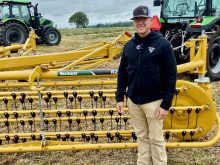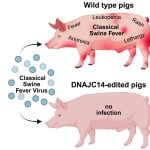There’s a need for standardization of approaches to improving soil health, as farmers are hit with many different opinions and recommendations.
It could be everything from acidity to nutrient solubility to microbial activity as the complexity of dealing with improving soil health is significant.
Wayne Black has been making the case that producers are being pressured to bear the brunt of responsibility for improving soil health while not being given the necessary information or tools to do that particular job.
Read Also

Claas brings 1000 Series SP forage harvesters to Canada
In mid-August, Claas unveiled its new line of Jaguar forage harvesters at an event in Visalia, California, deep in the heart of that state’s dairy region.
He’s been advocating for a standardized approach in employing best management practices and focusing on the right details pertaining to soil health. But in the overriding search for “what’s easiest” (which doesn’t exist in the first place), many are overlooking those distinctions, whether they apply to their crops, their fields, their farms or the regions they call home.
Black, national sales manager for A&L Canada Laboratories, continues to meet with producers, agronomists and advisors, and the feedback he’s heard centres on nitrogen-based fertilizer applications and increasing soil carbon. Yet a grower or agronomist can look at a soil test and miss some important indicators.
Split nitrogen
As an example, a grower might argue against split nitrogen applications saying it doesn’t pay. It might be a blanket statement, notes Black, and may not take some of their soil properties into account, such as how nitrogen is applied or their tillage practices. But two telling components are cation exchange capacity (CEC) and soil organic matter. If a grower has a CEC of 20 to 24 and organic matter levels above 4.0 –and they’re being told to split their nitrogen application, Black asks “Why?”. This compares to a grower with low CEC and organic matter levels who would see greater benefits from split nitrogen applications.
“The grower with higher levels is better suited to putting down all of his nitrogen up-front without serious concerns of fertilizer emissions or leaching, because he has that high CEC and moderate to high organic matter,” says Black. “People are telling farmers to increase their organic matter, but what is this grower going to increase his organic matter to?”
The discussion circles back to the “moving parts” characteristics of the soil and Black suggests there may be a drive by a producer or an advisor to find “one-size-fits-all” approaches in the chase for healthier soils. But those moving parts can apply to the trend in lower environmental sulphur deposition or depleted levels of boron.
“There’s no single factor that impacts how we create yield or do more for the environment,” says Black. He points to government directives on reducing nitrous oxide emissions or sequestering carbon as “missing the point”.
“Carbon is just one component of all that. But looking singularly at carbon is the same as trying to build a fertilizer program when you look at only potassium.”
‘B’ aware
Boron is one micronutrient that’s garnered more attention in the past couple of years as a barometer on soil health, yet Black noted its depleted levels in many fields when he worked for a co-operative near Lindsay, Ontario. In 2020 and 2021, tissue samples they tested were deficient in magnesium, sulphur and potassium, all of which helped with sales of K-Mag. But those applications did not result in significantly higher levels. What did appear was a deficiency in boron across every tissue sample they pulled.
“It screamed at us, and there are multiple reasons why, but I think it was because we started to look out for the magnesium deficiency,” says Black. “This is part of my issue with everybody who’s talking about soil health and carbon and nitrogen emissions. Nobody’s talking about the others, including potassium, boron and magnesium.”













